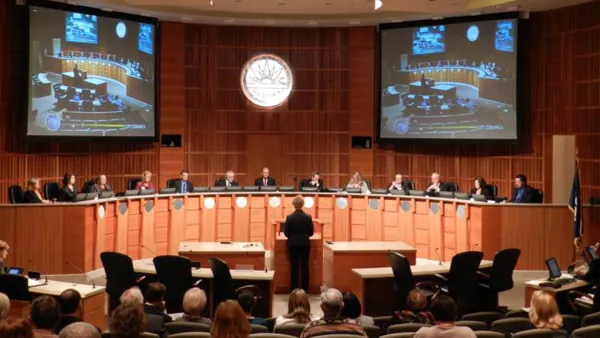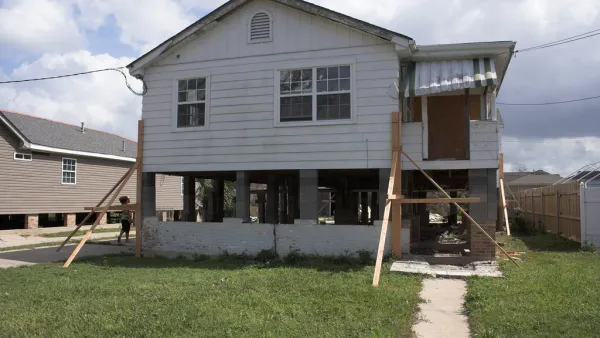Thanks to Planetizen for asking me to participate in “Planetizen Interchange” with such a distinguished group. This is my first entry so to let you know a bit about me, I live in New Orleans, LA. I was displaced for 10 months to Houston, TX after Katrina destroyed my house, but I am back in New Orleans where I am a planning, zoning and land use consultant.
Thanks to Planetizen for asking me to participate in "Planetizen Interchange" with such a distinguished group. This is my first entry so to let you know a bit about me, I live in New Orleans, LA. I was displaced for 10 months to Houston, TX after Katrina destroyed my house, but I am back in New Orleans where I am a planning, zoning and land use consultant. I am also Chairman of the New Orleans City Planning Commission. To say the least, this is an interesting time to be a planner in New Orleans.
The big planning issue, maybe the only planning issue, in metro New Orleans these days is recovery after the devastation of Hurricane Katrina in August 2005. After 18 months, much of the City is still devastated – devastation that pictures and television news stories can't begin to accurately portray. By most estimates, less than half of the City's pre-Katrina population has returned. The recovery planning process has been extremely long and is a multi-headed beast. A "Citywide" or "Unified" plan, sponsored by the Rockefeller Foundation and others, is before the City Planning Commission for public hearings and a recommendation to the Council. That plan was to put together the goals, recommendations and recovery projects of several other processes and studies into one "unified" plan. A giant, maybe impossible, task. The plan has been criticized by some as fluff, praised by others because of the extraordinarily extensive public participation process.
There are many issues being debated here. Just to pick one for discussion, what is the balance between what the public wants and what professional planning analysis recommends, especially when the two are at odds? Is there a way to find a middle ground?

Analysis: Cybertruck Fatality Rate Far Exceeds That of Ford Pinto
The Tesla Cybertruck was recalled seven times last year.

National Parks Layoffs Will Cause Communities to Lose Billions
Thousands of essential park workers were laid off this week, just before the busy spring break season.

Retro-silient?: America’s First “Eco-burb,” The Woodlands Turns 50
A master-planned community north of Houston offers lessons on green infrastructure and resilient design, but falls short of its founder’s lofty affordability and walkability goals.

Test News Post 1
This is a summary

Analysis: Cybertruck Fatality Rate Far Exceeds That of Ford Pinto
The Tesla Cybertruck was recalled seven times last year.

Test News Headline 46
Test for the image on the front page.
Urban Design for Planners 1: Software Tools
This six-course series explores essential urban design concepts using open source software and equips planners with the tools they need to participate fully in the urban design process.
Planning for Universal Design
Learn the tools for implementing Universal Design in planning regulations.
EMC Planning Group, Inc.
Planetizen
Planetizen
Mpact (formerly Rail~Volution)
Great Falls Development Authority, Inc.
HUDs Office of Policy Development and Research
NYU Wagner Graduate School of Public Service




























